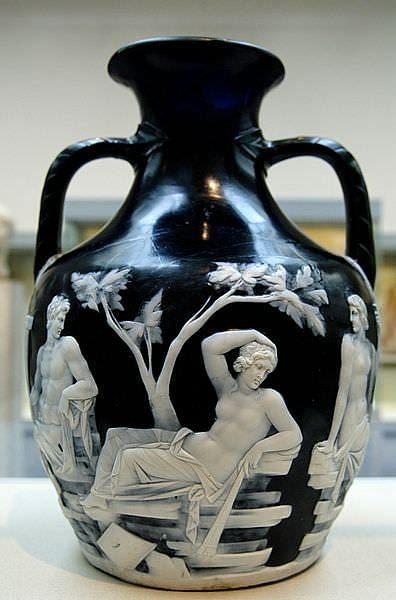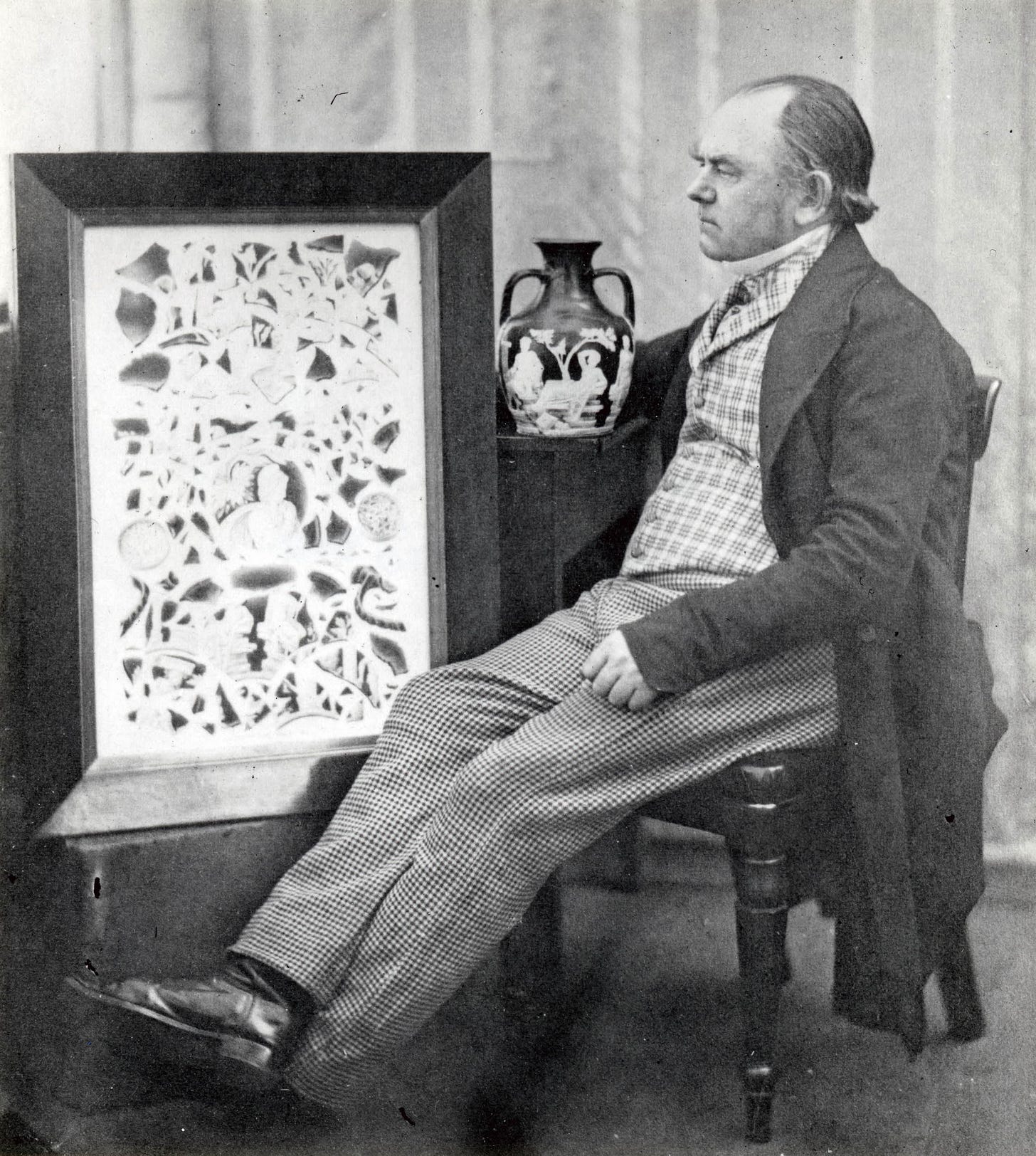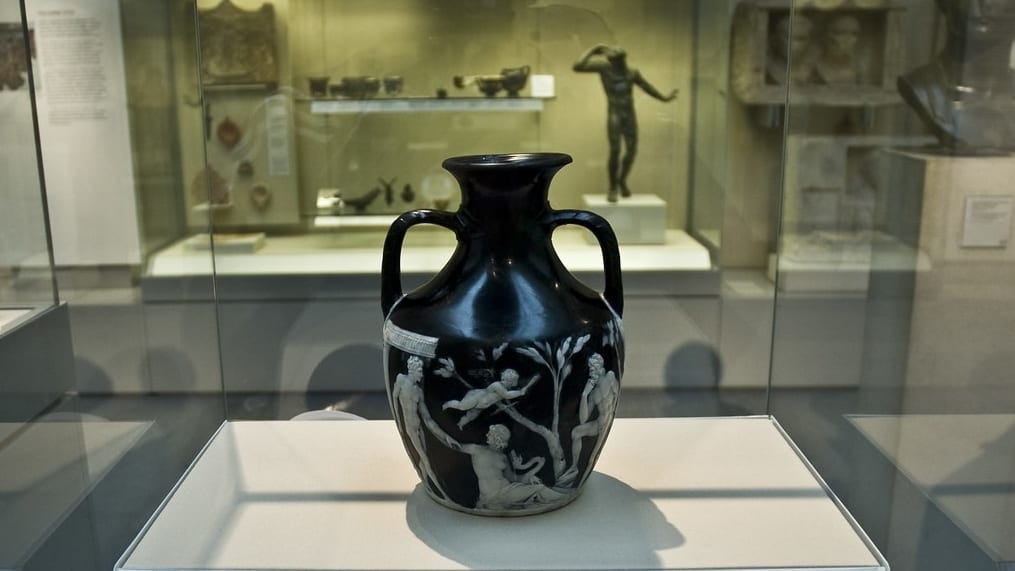February 7 - The Lost Legacy: When History Shattered Into Pieces
Discovering Beauty in Brokenness
This is the day the Portland Vase, a 1st century BC Roman cameo vase, was shattered into over 80 pieces by a drunken visitor in 1845.
In today's devotional, we will explore how God's work in our lives mirrors the restoration of the Portland Vase. How can our broken pieces reveal God’s craftsmanship? What does the journey from brokenness to beauty teach us about His grace and love?
"He heals the brokenhearted and binds up their wounds." - Psalm 147:3 (NIV)
This Date in History
On February 7, 1845, a catastrophic event occurred within the walls of the British Museum that shook the world of art and history. The Portland Vase, an exquisite piece of Roman cameo glass thought to date back to between AD 5 and 25, was shattered into more than 80 pieces. This vase, named after the Duchess of Portland who owned it before it was loaned to the British Museum, was not just a mere vessel but a symbol of ancient artistry and elegance. Its intricate design depicted scenes that have long intrigued scholars, possibly illustrating mythological themes or specific historical events from the Roman era.
The vase's journey to the British Museum was itself a tale woven through history. Unearthed in the 16th century from a tomb near Rome, the vase passed through various hands, each owner acutely aware of its historical and aesthetic significance. By the time it reached the British Museum, the Portland Vase had become one of the most admired objects of the ancient world, its cameo technique - where figures are carved in relief against a contrasting background - a marvel of ancient craftsmanship.
The events leading up to its shattering were mundane yet tragic. A drunken museum visitor, perhaps oblivious to the vase's significance or overwhelmed in the moment, caused its ruin. This act of vandalism was not just a blow to the artifact itself but a stark reminder of the fragility of cultural heritage. The museum was left with a daunting task: reassembling the vase, an effort that required the utmost precision and patience.
The restoration process was meticulous. Each of the over 80 fragments had to be carefully studied, matched, and adhered together. This painstaking task was a technical challenge and a journey to understand the vase's original form and the story it portrayed. The reassembly was a testament to human determination and respect for historical legacy.
After its restoration, the Portland Vase continued to be an object of fascination, not only for its ancient origins but also for its journey through destruction and renewal. It stood as a poignant symbol of the challenges in preserving our cultural heritage and the resilience in the face of adversity.
This event, seemingly a momentary lapse in a single individual's judgment, had far-reaching implications. It highlighted the need for protective measures in museums, sparked discussions about the preservation of historical artifacts, and reminded us of our shared responsibility in safeguarding our cultural legacy.
The Portland Vase’s story is a blend of ancient art, historical curiosity, a moment of human folly, and a remarkable journey of recovery. It encapsulates a narrative far beyond its physical form, speaking volumes about the intersection of history, art, and human nature.
Historical Context
The early 19th century marked a period of heightened appreciation for classical antiquities, particularly among European elites who actively collected ancient artifacts. The Portland Vase, discovered in a Roman tomb during the 16th century, represented the pinnacle of Roman cameo glasswork and had become a symbol of artistic achievement and historical significance. Its presence in the British Museum reflected both national pride and the era's commitment to preserving cultural heritage.
This period coincided with the Industrial Revolution and growing public access to museums, creating new challenges in protecting valuable artifacts. The British Museum, like many institutions, was navigating the delicate balance between making art accessible to the public and safeguarding precious artifacts. The shattering of the Portland Vase became a pivotal moment that prompted museums worldwide to reevaluate their security measures and public access policies.
Did You Know?
The Portland Vase is believed to have been discovered in a sarcophagus in the Monte del Grano near Rome.
Its cameo technique involves layering colored glass upon a clear glass base. This technique was extremely rare and highly valued in ancient Rome, making the vase not only a masterpiece of art but also a technological marvel of its time.
The original restoration by John Doubleday in 1845 cost £25, equivalent to approximately £3,000 in today's money.
Before the incident, the Portland Vase had survived intact for nearly two millennia, including a journey from Rome to England in 1784.
The Wedgwood company produced only 43 high-quality copies of the vase between 1790 and 1795, with only a few surviving today.
The glass-making technique used to create the Portland Vase involved carving through two layers of glass—white over blue—creating a cameo effect, a process that could take years to complete.
Despite the 1845 shattering and restoration, the Portland Vase became even more famous afterward, inspiring countless artistic works and studies in glass-making techniques.
Today’s Reflection
The Portland Vase, shattered into over 80 pieces, seemed beyond saving. Its intricate artistry, crafted with such skill centuries before, lay in ruins at the hands of a careless act. Yet, through patience and precision, the pieces were restored. Not perfectly, but beautifully. The fractures remained, but they told a new story. Not of destruction, but of redemption.
How often do our own lives feel like that shattered vase? We carry wounds from past mistakes, fractured relationships, and seasons of suffering that leave us feeling beyond repair. We look at the broken pieces and wonder if they can ever fit together again. Just as the British Museum's restorers painstakingly reassembled the vase, God, the ultimate Restorer, takes the fragments of our lives and transforms them into something whole and new.
"He heals the brokenhearted and binds up their wounds" Psalm 147:3 (NIV). But God's restoration is different from human restoration. He does not simply patch us up and return us to our original state. He makes us more. The cracks of our past, rather than being erased, become part of our testimony. In His hands, our deepest wounds become the very places where His grace shines the brightest. Like the restored Portland Vase, we carry evidence of our past. Rather than being defined by brokenness, we become living testimonies of God's faithfulness.
The apostle Paul reminds us: "Therefore, if anyone is in Christ, the new creation has come: The old has gone, the new is here!" 2 Corinthians 5:17 (NIV). Maybe today you feel like those shattered pieces. Scattered, hopeless, unsure if healing is possible. Restoration is a process, and God is at work even when we cannot yet see the masterpiece He is creating. The process is slow, often painful, and requires surrender. Yet, no piece of your story is wasted. Every scar is woven into the greater design of His grace.
The Portland Vase, once a victim of reckless destruction, became a symbol of resilience and beauty. Your life, redeemed by Christ, is the same. What the world sees as ruined, God calls beautiful. What seems beyond repair, He calls a new beginning. The cracks are not signs of defeat. They are the places where His love holds us together. Let that truth bring comfort and hope. The same God who restored that shattered vase restores shattered souls. Your story is not over. He is still at work.
Practical Application
Consider keeping a 'Restoration Journal.' In this journal, reflect on instances where you felt broken or fragmented, much like the Portland Vase. Document how, over time, these experiences have contributed to your growth and understanding of God's grace. This reflection will serve as a tangible reminder of how God works through our brokenness to create a tapestry of His love and redemption.
Closing Prayer
Heavenly Father, like the restorer of the Portland Vase, You pick up our broken pieces and carefully mend them with Your love and grace. Help us to see the beauty in our restoration and to trust in Your perfect design. May we embrace our journey of transformation, knowing that in Your hands, our brokenness is made whole. Amen.
Final Thoughts
Our contemplation of the Portland Vase's journey from destruction to restoration offers a poignant reflection of our own spiritual path. Through God's grace, what was once broken can be made whole, and transformed into a vessel of His glory. Our cracks and flaws, once healed and sealed by His touch, become a testament to His enduring love and craftsmanship.
Community Engagement
I love hearing from readers each day. Don’t worry, this isn’t a test—I promise! Feel free to drop a line or two in the comments below. You can answer one of the following questions, share your own reflections, pose a new question, or simply say hello. I can’t wait to hear from you!
How does the story of the Portland Vase's restoration resonate with you personally?
In what ways have you experienced God's restorative power in your life?
How can acknowledging our brokenness lead to deeper spiritual growth?
Reflect on a time when a difficult situation in your life was transformed into a learning or growth opportunity.
In tomorrow's devotional, we delve into the complexities of discernment in an age where media shapes much of our worldview. Discover the spiritual significance hidden within a groundbreaking event in cinematic history.








This vase is beautiful, but the lesson behind it is even more beautiful. What a remarkable story and metaphor for our lives.